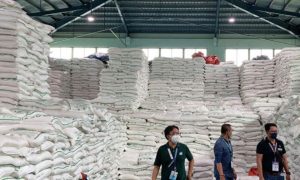Australia Set to Reduce Wheat Forecast on Drier, Hotter Conditions

(Bloomberg) — Australia is expected to reduce its forecast for the upcoming wheat harvest as hotter conditions bake growing areas, a blow to buyers such as China which may need more imports after rain damaged its crop.
Drier conditions across top producer Western Australia has already led to an industry association trimming its estimate for the state’s wheat crop, while parts of the east coast have also been hotter. The government’s forecaster is scheduled to release its overall grains outlook on Tuesday.
“If it gets drier and production falls below average, a higher proportion of our grain will need to remain on the domestic market to meet our own demand,” said Dennis Voznesenski, an analyst with Rabobank in Sydney.
China is expected to feed a lot more of its wheat to animals this year after heavy rains reduced the quality of its harvest, likely increasing the need for more imports. Extreme weather from scorching temperatures to flooding has damaged various crops across the world, adding to pressures on supply that includes Russia’s war in Ukraine and India’s export curbs on rice.
In June, the Australian Bureau of Agricultural and Resource Economics forecast a 34% decline in the 2023-24 wheat crop at 26.2 million tons, slightly below the 10-year average. The Grain Industry Association of Western Australia said last month that the state’s wheat output is unlikely to exceed 10 million tons.
Below average rainfall is expected for most of Australia in the coming months, according to a forecast from the Bureau of Meteorology. The nation typically starts harvesting its wheat crop in November, and China has been the biggest importer of the country’s grain the past two years.
Australia may reduce its wheat exports by more than 10 million tons in 2023-24, said Ole Houe, chief executive officer at broker and adviser IKON Commodities. The nation shipped over 32 million tons in 2022-23 following a bumper harvest, according to the nation’s agriculture department.
“The wheat crop started the year looking likely to be an above average crop, but dry weather has started to permeate and the crop is likely to be downgraded,” said Andrew Whitelaw, director of Australia-based agriculture analysis company Episode 3.
Source Link: https://finance.yahoo.com/news/australia-set-reduce-wheat-forecast-220000065.html














